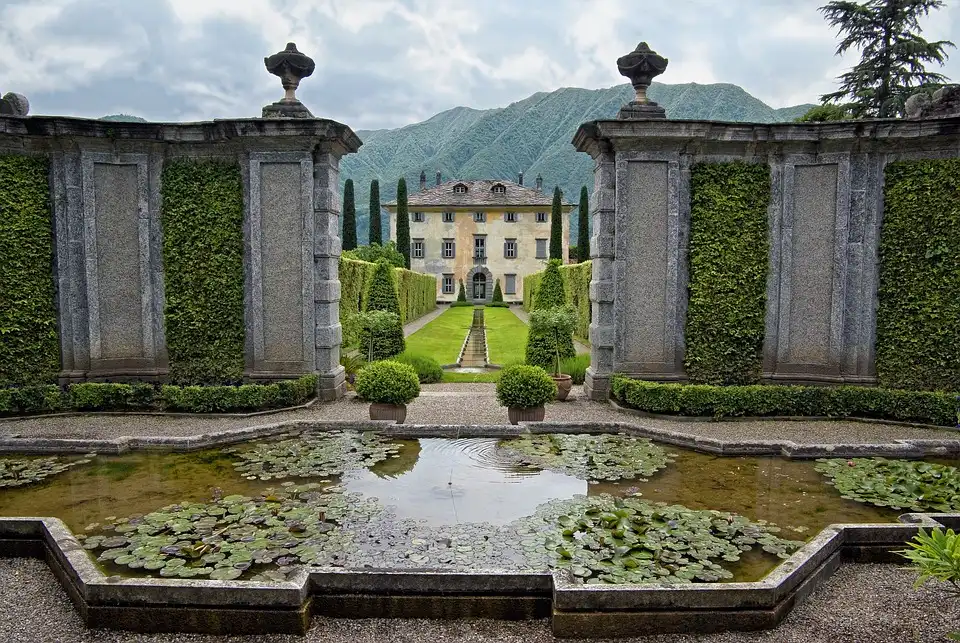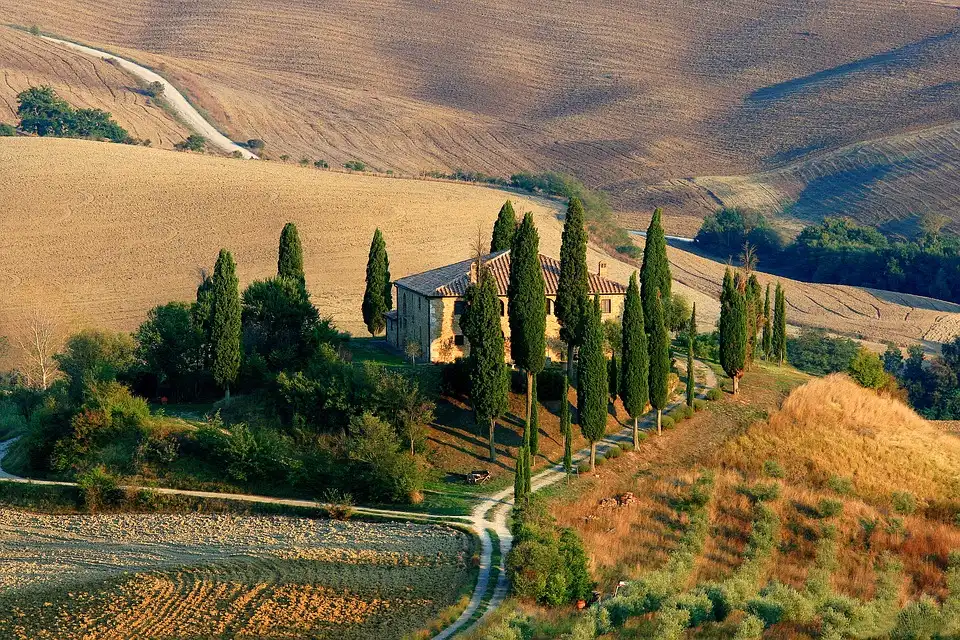Juniper vs. Cypress: Similarities and Differences
We’ve received a few queries regarding the Juniper vs Cypress debate, with many asking us what the difference is. As bonsai lovers, it’s a pertinent question, as you don’t want someone fooling you into believing that the one is the other.
So, we put this detailed guide together to show you the differences and similarities between the Juniper and Cypress so you can tell them apart. We’ll introduce you to each of them before we head off into the comparison.
Here are the topics we’ll cover:
Here are the topics we’ll cover:
01
02
03
04
05
Meet the Cypress
The Cypress genus, Cupressus, has a rich history steeped in mythology and ancient beliefs. Hellenic tradition stated that these trees were sacred to the gods, which is why they were often planted by graves and still are to this day. It’s also used as a symbol for grieving.
The original name comes from the Greeks, κυπάρισσος. From there, it entered the Latin world as Cyparissus before moving onto Cipres in ancient French times. Cypress trees love temperate regions, so you’ll find them throughout the Northern Hemisphere. Popular countries include North and Central America, the Middle East, the Himalayas, Africa, China, and Vietnam.
Meet the Juniper
There are about 67 species of Junipers worldwide in the Juniperus genus, which are also native to most parts of the Northern Hemisphere. Some additional regions include the Arctic, western and central Asia, and Tibet. It has many cultural and ornamental purposes in society, and it’s seen as one of the easiest to grow as a bonsai.
Juniper vs. Cypress: Similarities
With the quick introductions out of the way, we can now focus on the similarities of Juniper vs. Cypress. You’ll see the many ways they are alike before we head into the ways to tell them apart. We love performing this detailed investigation, as the comparison reveals the close connection between them.
Cypress Family
The first aspect we want to touch on involves classification. Both Juniperus and Cupressus are in the Cupressaceae family, also known as the cypress family. There are also redwoods in this class, which stands as cousins to the Pine family. The way taxonomy works is that the family is named after one of the top genera that characterize the grouping the most; in this case, cypresses.
Therefore, you can rightly say that a Juniper is a Cypress, but you can’t say that a Cypress is a Juniper. Of course, this only stands from a family point of view, as they’re still two very different genera with their own characteristics and traits that set them apart. More on that later.
Evergreen Nature
Another common feature in the Juniper vs. Cypress battle is that both genera are evergreen. They retain their foliage all year round, even in the cold of winter. The only time you’ll see any color change in the leaves is if something is wrong, such as insufficient light or water.
Excellent as Bonsais
From personal experience, we can tell you that both Junipers and Cypresses do well as bonsais. They are incredibly sturdy when mature, and you shouldn’t have any trouble maintaining them. For the former, you can check out our detailed Juniper care guide.
On the same point, both genera have popular species for bonsais. We’re really torn between the Garden Juniper and Italian Cypress, as both look absolutely outstanding as miniature trees. The one branches out more, while the other has a pyramid, tapering point. They both look incredible and manage to show green leaves all year.
Needle Leaves
While they may look different upon closer inspection, the common factor between Juniper and Cypress bonsais is that they both have needle leaves. Sure, they form differently, and you can shape them in various ways, but they’re still classified as needles.
Range of Colors
That brings us to the next point. Both genera have the same color schemes on their foliage, whether it’s yellow, grey, green, or blue-green. You’ll also see similar defects in the colors when there’s something wrong, drawing your attention so that you can help. There are even various hues of green, such as light and dark, with a little bit of glistening silver somewhere in between.
Cones
Another aspect where they’re similar, yet different, is that they bear cones instead of flowers or the normal fruit you’ll see on citrus trees. You’ll find varieties that are monoecious and dioecious depending on the species, where the male and female parts are either together on the same tree or not.
With the male cones, you’ll find pollen inside, while the female cones have the seeds. It can take up to two seasons for them to ripen and produce the seeds, so patience is required. We’ll discuss in more detail later how these cones differ.
Pests
One final factor that Juniper vs. Cypress trees have in common is that the same range of pests hunts them down. Even the diseases are similar. They include aphids, flat-headed borers, bark beetles, needle miners, root nematodes, webworms, spider mites, sawflies, and root rot. Therefore, you’ll need to take the same precautions for both of them.
In most cases, there are other predators that will take care of them for you in small amounts. It’s only when you see it spinning out of control that you need to turn to insecticide. Make sure you use blends that are safe for needles.
Juniper vs. Cypress: Differences
Now that you know what Junipers and Cypresses have in common, it’s time to look at the specific differences. We’ll try to go into as much detail as possible so you can more easily tell them apart. It will help you look after your bonsai trees better so that they can thrive.
Size and Shape
Junipers and Cypresses can both develop up to 50 ft wide and 130 ft. high. The chief difference is how they attain that height. While there are some Cypresses that can become bushy like Junipers, most of them have conical shapes that taper to a thin tip.
Junipers prefer to spread out along the ground or edge out to the sides than aim for height. Sure, there are a few exceptions to the rule, but most Junipers don’t have the same conical shape unless you shape it on your bonsai that way.
Sunlight Requirement
Cypress bonsais are notorious for loving full sunlight for several hours in the day. Even in the peak afternoon, they will soak in as much of the sun’s energy as possible, the conical shape allowing all the needles to use the light as much as possible. Seedlings won’t do well in the shade of any kind.
Junipers, on the other hand, prefer some shade during the day. Yes, you can give it direct sunlight and it will do well, but you should limit it to six hours in the day. Also, the needles of your bonsai won’t do too well in the peak afternoon.
Watering Needs
When it comes to Cypress bonsais, they need plenty of water in the younger years, almost on a daily basis in summer. All that intense heat makes them thirsty, so you’ll need to provide it regularly when the heat turns up. As it ages, you can supply less water, but it still needs more than the Juniper.
Due to the native countries they grow in, Junipers can survive drought-like conditions. If you water them too much, it can lead to root rot and other diseases. Steer clear of irrigation systems, but ensure you still give it sufficient humidity.
Soil and pH Levels
While Cypresses love loads of water, they prefer if there’s good drainage. The roots shouldn’t drown in the liquid, as long as there’s enough moisture for the day ahead. The pH level shouldn’t go over 7.5, but it can handle anything below that. You can test the top 2 inches of soil and water when it feels dry.
The Juniper bonsai can only handle pH levels between 5 and 7, and the soil mustn’t remain moist for too long. You can actually let it dry out a bit before applying more water. They also don’t like clay or sandy soil.
Fruit
Here’s the best part of our Juniper vs. Cypress comparison, as it really helps with identifying them. Cypresses have small cones that look like balls with scales. They are usually reddish-brown, and the seeds have small wings on them. The seeds are also generally larger and you’ll find more in a pod.
Junipers have gorgeous berries that are red-brown, green, or blue in color. The berries sometimes have small spikes on them, and some species have fruit that are edible. The seeds are tiny and don’t have wings on them, and you’ll only find small amounts per berry.
Feeding
If a Cypress grows relatively quickly compared to other months, you don’t need to give it fertilizer. Should you see slow development, you need food that’s high in nitrogen, such as 15:10:10. You also need trace elements like sulfur and calcium to help it grow further.
Junipers need fertilizer in early spring only, and you can aim for a balanced approach. When autumn arrives, you need to stop feeding it, as it will result in overfeeding. It’s also best to keep the food as far away from the trunk as possible, as it may harm it or cause diseases to form.
Maintenance
To keep the conical, pyramid shape, you’ll need to constantly prune your Cypress bonsai. In spring, you’ll see leaves flare out, sometimes more than others, which makes the symmetry fall apart. You’ll need to give it attention weekly and prune or pinch back when it grows too quickly.
Junipers are slow growers and don’t require as much attention. If shoots break out from a needle cluster, it’s easy to remove or resolve with some pinching. The leaves will usually form together in small bundles that you can clear out if you want to make more space and prevent shoots from appearing at awkward locations.
Element Resistance
One last aspect to consider is resistance to the elements. Both Junipers and Cypresses can handle cold temperatures to a certain degree. However, your Cypress bonsai needs protection from strong winds. The tall, conical shapes can easily snap if there’s a gale-force wind, and you don’t have anything to shield it.
When it comes to Junipers, they don’t have the same problem. With the needles spreading low on the ground, they can easily manage against strong winds and rainfall. Even as a bonsai, the bushy foliage is able to resist falling over or damage.
Final Thoughts
Many people have discussed Juniper vs. Cypress debate to length, but it’s undeniable that they both serve as gorgeous bonsais. They’ll grace any home and collection with beauty, especially when the berries and cones are in full display. We recommend you obtain as many species from both genera as possible that can handle your location.







